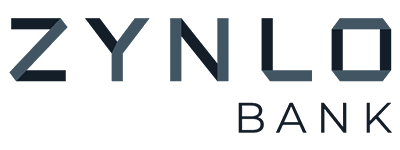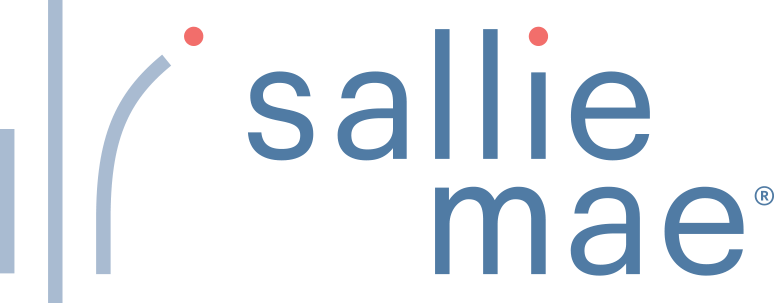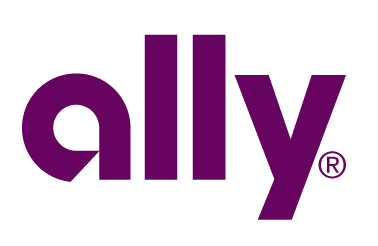8 Best Money Market Accounts of 2025: Up to 4.40%
The best money market accounts have strong rates that can help increase your savings.
+ 1 more
Many or all of the products on this page are from partners who compensate us when you click to or take an action on their website, but this does not influence our evaluations or ratings. Our opinions are our own.
Why trust NerdWallet
Strict editorial guidelines to ensure fairness and accuracy in our coverage to help you choose the financial accounts that work best for you. See our criteria for evaluating banks and credit unions.
More than 100 financial institutions surveyed by our team of experts.
More than 50 data points considered for each bank and credit union to be eligible for our roundups. For this specific page, more than five data points were considered per institution.
The best money market accounts have rates that help you grow your bank balance faster than accounts with average rates. Read on to learn more about the best MMAs today. We’ve also included a few high-yield savings options at the bottom of the page to help you decide which type of account is best for you.
Annual percentage yields shown are current as of June 23, 2025. All other information is current as of May 6, 2025.
Best Money Market Accounts of 2025: Up to 4.40%
| Bank/institution | NerdWallet rating | APY | Bonus | Learn more |
|---|---|---|---|---|
4.5/5 | 3.40% With $0 min. balance for APY | N/A | Learn moreon partner's site at Discover® Bank, Member FDIC | |
4.5/5 | 4.40% With $0.01 min. balance for APY | N/A | ||
5.0/5 | 4.31% With $0.01 min. balance for APY | N/A | ||
4.5/5 | 3.85% With $0.01 min. balance for APY | N/A | ||
4.5/5 | 4.25% With $0 min. balance for APY | N/A | ||
4.5/5 | 3.50% With $0.01 min. balance for APY | N/A | ||
4.5/5 | 4.00% With $10,000 min. balance for APY | N/A | ||
4.4/5 | 4.25% With $0.01 min. balance for APY | N/A |
Our pick for
Money Market Account
APY
3.40%
With $0 min. balance for APY
Bonus
N/A
Our Take
Money market rate: The Discover® money market account has a 3.40% APY on balances below $100,000. If you have more to deposit, the rate is 3.45% APY.
Minimum balance and fee: There is no minimum balance requirement and no monthly fee.
What you should know: This money market account has check-writing and debit card privileges. Discover® Bank offers customer support 24 hours a day, seven days a week. Discover also has a cash back rewards checking account with no monthly fee.
APY
4.40%
With $0.01 min. balance for APY
Bonus
N/A
Our Take
Money market rate: ZYNLO's money market account earns 4.40% APY.
Minimum balance and fee: There is no minimum balance requirement and no monthly fees.
What you should know: While ZYNLO Bank doesn’t have any branches, it does have customer service representatives available by phone from 8 a.m. to 10 p.m. ET on weekdays, and from 10 a.m. to 2 p.m. ET on Saturdays and Sundays. ZYNLO Bank is a division of PeoplesBank, which is based in Massachusetts.
APY
4.31%
With $0.01 min. balance for APY
Bonus
N/A
Our Take
Money market rate: The Vio Bank Cornerstone Money Market Savings Account earns 4.31% APY on all balances. The bank’s MMA has historically offered strong rates and was the 2025 winner of NerdWallet’s Best-Of Award for money market accounts.
Minimum balance and fee: There is a $100 minimum to open and no monthly fee.
What you should know: Vio Bank is a division of Oklahoma City-based MidFirst Bank. Customer service is available by phone 8 a.m. to 10 p.m. ET on weekdays, 9 a.m. to 7 p.m. ET on Saturdays and 1 p.m. to 5 p.m. ET on Sundays.
APY
3.85%
With $0.01 min. balance for APY
Bonus
N/A
Our Take
Money market rate: Earn 3.85% APY on any balance.
Minimum balance and fee: There is no minimum balance requirement and no monthly fee.
What you should know: This account comes with check-writing privileges. Customer service is available weekdays from 9 a.m. to 6 p.m. ET.
APY
4.25%
With $0 min. balance for APY
Bonus
N/A
Our Take
Money market rate: 4.25% APY on all balances.
Minimum balance and fee: There is a $100 minimum to open an account, but no monthly fee.
What you should know: This money market account comes with a debit card. Customer service is available by phone or chat on weekdays from 9 a.m. to 6 p.m. ET.
APY
3.50%
With $0.01 min. balance for APY
Bonus
N/A
Our Take
Money market rate: The Ally Money Market Account earns 3.50% across all balance tiers.
Minimum balance and fee: There is no monthly fee or minimum amount required to open an account.
What you should know: This account offers a debit card and the ability to write checks. Customer service is available 24 hours a day, seven days a week.
APY
4.00%
With $10,000 min. balance for APY
Bonus
N/A
Our Take
Money market rate: The EverBank Performance℠ Money Market lets account holders earn a 4.00% APY on balances of $10,000 or more. The account offers tiered rates, so for balances below $10,000, the APY is lower.
Minimum balance and fee: There is no minimum amount to open an account, and there is also no monthly fee.
What you should know: EverBank does not charge ATM fees. In addition, if you use domestic ATMs that are not in the bank’s network, EverBank will reimburse any ATM fees charged by the machine owner, up to $15 each month. If your average daily bank balance is at least $5,000, the ATM fee reimbursement is uncapped. Customer service is available by phone weekdays from 8 a.m. to 8 p.m. ET and Saturdays from 9 a.m. to 7 p.m. ET.
APY
4.25%
With $0.01 min. balance for APY
Bonus
N/A
Our Take
Money market rate: First Foundation Bank’s Online Money Market account earns a 4.25% APY.
Minimum balance and fee: You’ll need $1,000 to open an account. After that, there is no monthly fee, even if the balance dips below $1,000.
What you should know: A debit card is available upon request. This account also has check-writing privileges. Customer service is available by phone Monday through Thursday from 8 a.m. to 11 p.m. ET, Fridays from 8 a.m. to 9 p.m. ET and Saturdays from 9 a.m. to 5:30 p.m. ET.
The investing information provided on this page is for educational purposes only. NerdWallet, Inc. does not offer advisory or brokerage services, nor does it recommend or advise investors to buy or sell particular stocks, securities or other investments.
What is the best money market rate today?
The highest money market rate on our list today is 4.40%. ZYNLO Bank offers money market accounts with this yield.
Money market account definition
A money market account is a type of savings account that may also offer the ability to write a few checks or make a few debit card transactions each month.
Weigh your options: Some high-yield savings accounts beat money market rates and have lower fees, which means you’ll come out ahead with the former. And the best savings accounts have low to no minimum deposits. But without debit cards or checks, it might be harder to access your money in a regular savings account compared to an MMA. (Check out NerdWallet's best high-yield online savings accounts.)
The average money market rate is around half a percent, but you can do better.
Let’s say you put $10,000 in an account that earns a 0.50% APY. After a year, your balance would grow by $50.
Put that same amount in a money market account with a 4% APY, and it would gain $400. You earn more money with no extra effort.
What is the difference between a money market account and a standard savings account?
A savings account is a type of deposit account offered by a financial institution that typically earns interest. A money market account is also a type of deposit account, but some MMAs come with a debit card or checks. However, institutions that offer these features may limit transactions to no more than about six times per month. Regular savings accounts can have similar limit restrictions for some types of withdrawals, such as online transfers.
MMAs have traditionally earned higher interest rates compared to standard savings accounts, though recently some high-yield savings accounts have been offering better returns.
A high-interest savings account earns attractive rates, but typically does not have debit card or check-writing access. The main reason to open a money market account is to have a higher interest rate compared to a traditional savings or checking account, while also having the ability to write a few checks.
Check out NerdWallet's primer on types of savings accounts for more information.
Are the best money market accounts insured?
Yes, as long as they are deposit accounts that come from a bank or credit union that is federally insured. You can find federally insured accounts at traditional brick-and-mortar banks and online banks. The Federal Deposit Insurance Corp. insures deposits up to at least $250,000. If the account is with a credit union, the account will likely be federally insured through the National Credit Union Administration, also up to at least $250,000.
If a bank or credit union were to fail and go out of business, you would not lose the money you have in the money market account, up to the insured amount. Note that this is different from funds held in money market mutual funds, which are not federally insured.
» Want to know more about how your money is protected? Read how FDIC and NCUA insurance programs work.
The difference between a money market account and a money market mutual fund
A money market account is a federally insured account that earns interest. A money market mutual fund, on the other hand, is an investment in short-term debt. It is considered low risk but doesn't have a guaranteed return.
» Learn more about both by reading NerdWallet’s guide on money market mutual funds.
Top savings options
These days, there isn’t always much difference between the rates paid by money market accounts and the best savings accounts. If you don’t need checks or a debit card, you might consider one of these federally insured accounts, which also pay great rates.
Axos Bank, 4.66% APY (read full review).
Santander Bank*, 4.30% APY (read full review).
Newtek Bank, 4.35% APY (read full review).
*Santander Bank disclosure
Santander Bank says:
"Openbank High Yield Savings is currently available to individuals who reside in the 50 states and the District of Columbia.
*Interest Rates and Annual Percentage Yields (APYs) are accurate as of 12:01 am Eastern Time June 5, 2025. The products and rates we offer may vary between locations, are available in select markets only, and are subject to change without notice. Rate for this product will be based on the residential zip code entered when account is opened within online application process. This is a variable-rate account and the rate applicable to your balance tier may change at any time without notice. A minimum deposit of $500 is required to open a Openbank High Yield Savings account. Personal accounts only.
Openbank is a division of Santander Bank, N.A. Member FDIC. There is a maximum of $250,000 of deposit insurance from the FDIC per depositor for each category of account ownership. Visit FDIC.gov for details. Deposits at Santander Bank, N.A., and Openbank are combined for the purposes of calculating FDIC insurance limits (FDIC Cert #29950) and are not separately insured."
Last updated on June 23, 2025
Methodology
We took a close look at over 100 financial institutions and financial service providers, including the largest U.S. banks based on assets, internet search traffic and other factors; the nation’s largest credit unions, based on assets and membership; and other notable and/or emerging players in the industry. We rated them on criteria including annual percentage yields, minimum balances, fees, digital experience and more.
Financial institutions and providers surveyed are: Affirm, All America Bank, Alliant Credit Union, Ally Bank, Amalgamated Bank, America First Credit Union, American Express National Bank, Andrews Federal Credit Union, Associated Bank, Axos Bank, Bank of America, Bank5 Connect, Barclays, Bask Bank, BMO, BMO Alto, Boeing Employees Credit Union, Bread Savings®, BrioDirect, Capital One, Carver Federal Savings Bank, CFG Bank, Charles Schwab Bank, Chase, Chime, CIBC U.S., CIT Bank, Citibank, Citizens, Citizens Bank, City First Bank, Climate First Bank, Commerce Bank, Community First Credit Union of Florida, ConnectOne Bank, Connexus Credit Union, Consumers Credit Union, Current, Customers Bank, Delta Community Credit Union, Discover® Bank, E*TRADE, EverBank, Fifth Third Bank, First Foundation, First Internet Bank, First National Bank, First Tech Federal Credit Union, Flagstar Bank, FNBO Direct, Forbright Bank, FourLeaf Federal Credit Union, Global Credit Union, GO2bank, Golden 1 Credit Union, Greenwood, Hope Credit Union, Huntington Bank, Industrial Bank, Ivy Bank, Jenius Bank, KeyBank, Lake Michigan Credit Union, Laurel Road Bank, LendingClub Bank, Liberty Bank, Live Oak Bank, M&T Bank, Marcus by Goldman Sachs, My Banking Direct, NASA Federal Credit Union, Navy Federal Credit Union, NBKC, Newtek Bank, OMB Bank, One, OneUnited Bank, Pentagon Federal Credit Union, PNC, Poppy Bank, Popular Direct, Quontic Bank, Regions Bank, Revolut, Salem Five Direct, Sallie Mae Bank, Santander Bank, SchoolsFirst Federal Credit Union, Security Service Federal Credit Union, Securityplus Federal Credit Union, Self-Help Credit Union, Service Credit Union, SoFi, State Employees’ Credit Union of North Carolina, Suncoast Credit Union, Synchrony Bank, TAB Bank, TD Bank, Truist Bank, U.S. Bank, UFB Direct, Upgrade, USAA Bank, Varo, Vio Bank, Wells Fargo, Western Alliance Bank and Zynlo Bank.
NerdWallet's Best Money Market Accounts of 2025: Up to 4.40%
- Discover® Money Market Account: Best for Money Market Account, 3.40% APY
- Zynlo Money Market Account: Best for Money Market Account, 4.40% APY
- Vio Bank Cornerstone Money Market Savings Account: Best for Money Market Account, 4.31% APY
- Sallie Mae Money Market Account: Best for Money Market Account, 3.85% APY
- Quontic Money Market Account: Best for Money Market Account, 4.25% APY
- Ally Bank Money Market Account: Best for Money Market Account, 3.50% APY
- EverBank Performance℠ Money Market: Best for Money Market Account, 4.00% APY
- First Foundation Bank Online Money Market: Best for Money Market Account, 4.25% APY
Frequently asked questions
How do I choose the best money market account?
Look for a money market account with a high rate and no monthly fees. Some money market accounts have a monthly fee of around $10 or more if you don’t keep a daily minimum balance, often more than $1,000. Accounts featured on this page have high rates and low fees.
Are money market rates fixed?
No, rates are variable and can change over time. The money market accounts featured on this page are among those with the most consistently highest rates.
How do I open a money market account?
You can open a money market account either online or in person. Be prepared to provide your Social Security number and contact information, along with at least one form of identification, such as a driver’s license or a passport. (For a joint account, everyone wanting access to the account must provide this information and valid forms of identification.)
The bank will often require you to transfer money into the new account right away. You can do that by depositing cash or checks, or through a wire transfer.







